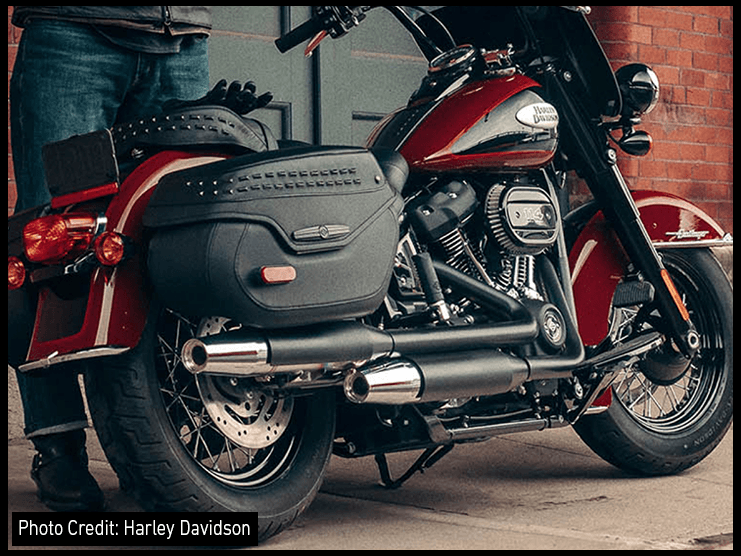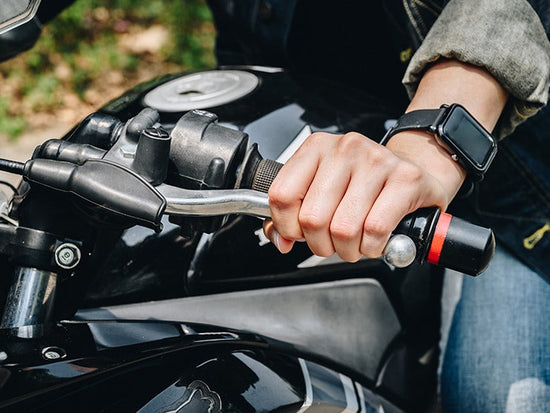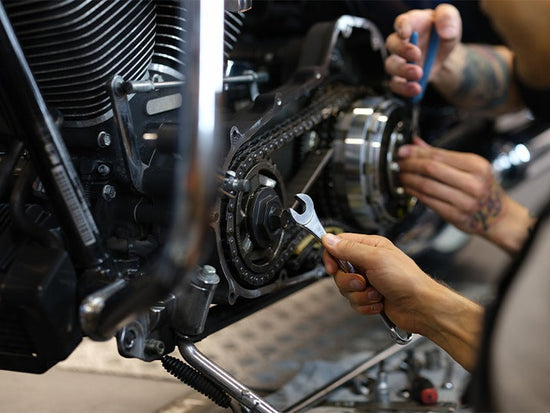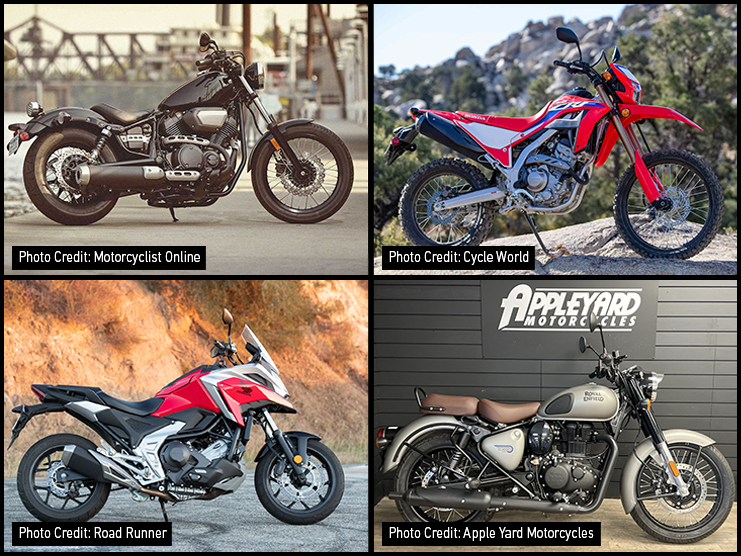Harley Davidson V-Twins are the high-performers of the motorcycle industry and require proper maintenance to run at their highest potential, offering a smooth and enjoyable ride to Harley loyalists. This is probably the reason why Harley V-Twins have gained quite a reputation for being high maintenance. From its engine to the suspension and braking system, each part of a Harley V-Twin demands attention and timely care. One of the most common wear components on a Harley V-Twin is its clutch, and because it is responsible for smooth gear shifts, power transmission, acceleration, control, and other important aspects of motorcycling, a V-Twin’s clutch must get adjusted from time to time as required.
Clutch adjustment is a simple enough task and riders can easily perform it themselves, even if they ride a Harley Davidson V-Twin. Knowing how to adjust a motorcycle clutch allows you to fix the issue promptly, especially in regions where finding a mechanic is a highly unlikely occurrence. On the other hand, knowing how to adjust the clutch on a Harley V-Twin will help you ensure that the mechanic has performed the task properly. If you are someone with little to no mechanical knowledge about your motorcycle, adjusting a clutch on your V-Twin might be the first step to becoming more acquainted with the operations of your two-wheeler, considering it is quick and effortless. This article aims to provide you with a simple step-by-step guide on how to adjust a clutch on your Harley Davidson V-Twin motorcycle.
Table of Content
1. Understanding the Importance of Motorcycle Clutch Adjustment

Motorcycle clutch adjustment is an important part of routine motorcycle checks and service intervals. Proactive motorcycle clutch maintenance, especially adjustment, helps alleviate many motorcycle performance issues, including engine stalling, jerky/inconsistent gear shifts, and premature wear of motorcycle drivetrain parts. Additionally, improper motorcycle clutch adjustment can impact control and power production, leading to increased difficulty navigating twisties, sharp corners, hairpin turns, and slick or low-traction riding conditions.
Motorcycle clutch adjustment is also important for ensuring predictable acceleration and deceleration, allowing riders to better control their speeds and feel more confident when performing high-speed and slow-speed maneuvers, applying brakes, or cornering. Improperly adjusted motorcycle clutch may also lead to incomplete gear engagement and loss of control due to unpredictable power output. Many times, riders fail to manage traffic conditions on the road due to a poorly adjusted clutch. Gear slippage is another common issue arising from an improperly adjusted clutch, leading to loss of traction and major accidents.
Also Read: How Long Should a Motorcycle Clutch Last?
2. Advantages of Learning Harley V-Twin Clutch Adjustment
For a Harley V-Twin rider, who is also an avid touring enthusiast, self-reliance in terms of maintenance, motorcycle care, and customization is of great importance. Harley Davidson motorcycles are expensive to buy and maintain, and neglecting important components can add to the expenses by accruing heftier amounts in terms of costly replacements. Poor clutch adjustment is a common underlying cause of worn-out transmission components; therefore, it is important to learn how to perform this straightforward maintenance task yourself and add it to your recurring maintenance routine. Here are some compelling reasons and advantages to learn to adjust the Harley V-Twin clutch yourself.
2.1 Cost-Effective
Self-adjusting your Harley V-Twin clutch is a money-saving activity and not the least bit time-intensive. Considering the versatility of Harley V-Twins, many riders use these bikes for all three on-road riding styles: aggressive/sporty, touring, and commuting. Each riding style requires a different clutch adjustment to protect the transmission from wear and ensure complete gear engagement. By learning how to adjust the clutch of your V-Twin motorcycle, you will reduce your visits to the dealership or a Harley motorcycle shop, save a significant amount of money, and also adapt the clutch to your changing riding habits and needs for responsive handling, adequate power delivery, seamless gear shifts, and enhanced overall maneuverability.
2.2 Motorcycle Expertise
Riding a motorcycle requires two types of expertise: one of riding and bike maintenance knowledge. Performing small maintenance tasks on your own, including the Harley V-Twin clutch adjustment, will help you become more apt at riding, diagnosing potential issues arising in your motorcycle, ensuring timely maintenance to prevent the issues from causing large-scale damage, and becoming a more confident rider. During interstate travels, knowing how to properly perform clutch adjustment and other maintenance tasks offers you the peace of mind required to continue your adventurous escapade.
2.3 Customization
Harley Davidson V-Twin customization extends beyond merely installing luggage bags , improving safety with crash bars , enhancing ergonomics with handlebars and seats , mounting adventure accessories , and using other touring-oriented aftermarket parts for memorable motorcycle escapades. Quite the contrary, something as essential as adjusting a Harley Davidson V-Twin clutch to adapt gear engagement to your preference is also considered customization. Knowing how to perform the task yourself, makes it easier for you to adjust the clutch multiple times until you achieve optimized tuning. Whether you prefer a lighter or heavier clutch feel, you can adjust it accordingly for a more responsive clutch and a smoother riding experience.
2.4 Convenient Maintenance
Being able to adjust the Harley V-Twin clutch on your own saves you the hassle of scheduling an appointment with the certified Harley technician at the dealership and allows you to perform the task as per your own Harley maintenance schedule. In addition, if your V-Twin motorcycle needs immediate clutch adjustment and you get a long appointment, knowing how to fix the issue yourself will allow you to ensure that your bike runs in top condition at all times.
2.5 Knowledge and Confidence
While learning how to adjust your Harley V-Twin motorcycle’s clutch, you will research different aspects of the motorcycle clutch system, transmission, and how different components work in sync to deliver the power and acceleration you need while riding on the road. The knowledge you will gain while learning to perform this task will spark a passion in you to find out more about the mechanics of your bike, allowing you to identify and fix other minor issues that do not require sophisticated tools and diagnostic scanners.
3. Signs Your Harley V-Twin Clutch Needs Adjustment
Before you learn to adjust the clutch on your Harley V-Twin motorcycle, it is important to find out the lifespan of a motorcycle clutch. Some Harley V-Twin clutches require adjustment sooner than you expect, primarily because of your aggressive riding style. Conversely, riders who are soft on their manual clutch can easily use it for over a hundred thousand miles or more before needing adjustment. Therefore, knowing when to adjust the Harley V-Twin clutch is crucial for your bike’s optimal performance, and for this information, you can rely on the following symptoms.
3.1 Problem Accelerating
A Harley V-Twin clutch that requires adjustment drastically affects the motorcycle’s acceleration. No matter how much you twist the throttle or rev the motor, your bike will not gain the acceleration it usually does. This is a clear sign that the V-Twin’s clutch is not engaging properly, causing acceleration issues.
3.2 Difficulty Shifting Gears
If you find it difficult to shift your Harley V-Twin into gear from neutral, the clutch is the first place to look for a problem. After riding their Harley V-Twin motorcycles for some time, riders gain a clear understanding, or a mental map, of how the bike’s clutch engages and helps in shifting gears. If it seems that gear transitions have become unusually demanding, your clutch adjustment is to blame.
3.3 Clutch Slips
Clutch slipping is a condition where your motorcycle’s clutch fails to properly engage or disengage the gearbox, also called transmission. This causes your V-Twin to slip out of gear without any input or find it challenging to stay in the gear during acceleration, resulting in the same acceleration problems as discussed supra.
3.4 Noises
A properly adjusted motorcycle clutch usually operates quietly, but if you start noticing squeaky or other loud sounds coming from the clutch each time you shift gears, it is an indication that the clutch is wearing down and requires adjustment, or your bike needs a clutch replacement.
3.5 Sticky Clutch
Clutch sticking is another common problem that your Harley V-Twin can experience, in which the clutch cable fails to come back to its original position after the clutch lever is pulled. This prevents the clutch from disengaging fully, making it difficult to transition between gears and, at times, causing the motorcycle to accelerate on its own.
4. How to Adjust Clutch on Your Harley V-Twin Motorcycle

The motorcycle clutch adjustment process for all Harley Davidson V-Twin motorcycles is quite similar regardless of the model. Therefore, by following the guidelines provided infra, you will be able to tackle this maintenance task without difficulty.
4.1 Tools Required to Adjust Harley V-Twin Clutch
- Wrenches (0.5 inch and 11/16)
- Hex Key
- Screwdriver (in case that’s what your bike requires)
- Allen Key
- Torque Wrench
- Torque Measuring Tool
4.2 Move the Clutch Cable Casing
The clutch cable cover protects the clutch wire and assembly from damage, dirt buildup, and wetness, and helps provide a neat look to the motorcycle. You can identify this cable cover on your Harley V-Twin as a ribbed rubber casing located between the handlebars and the lower section of the V-Twin frame. Harley V-Twin motorcycles that operate with a manual clutch require an accurate clutch wire adjustment before you can perform maintenance on the clutch system. Therefore, always start by gliding the clutch cable cover up or downward to access the cable adjuster.
4.3 Adjust the Cable
After removing the cover, create some play in the cable and compress the housing it pushes pressure on to ensure that the clutch is immune to the cable. Additionally, adding more play/slack to the cable eliminates any tension, allowing you to pull the clutch lever to the maximum without experiencing any hindrance after adjusting the clutch cable.
To create a play in the cable, lock a 0.5-inch wrench on the adjuster and use another wrench to loosen the nut attached to the top of the adjuster mechanism, allowing you to release the tension in the clutch cable. To remove all cable tension, continue turning the adjuster nut until it reaches the maximum point, ensuring that there is maximum play in the cable and no tightness left that can interfere with the accuracy of the cable adjustment or the performance of the V-Twin’s clutch system.
4.4 Remove the Derby Cover
The derby cover, designed to encase the clutch assembly and other primary drive components of the Harley V-Twin engine, offers you the ease of access to perform clutch adjustment. But before you can gain access to the component, you must unfasten all the bolts securing it to the motorcycle. While removing the derby cover, be mindful of the potential primary fluid leaks, especially if your Harley is resting at an angle on the stand; consider spreading a tarp underneath before performing this step. Additionally, hold the derby cover in place as you unfasten the last fastener to prevent it from falling and getting damaged.
4.5 Unfasten the Lock-Nut from Clutch Adjuster Mechanism
Similar to the lock nut positioned on the clutch cable adjuster, one lock nut is also present on the clutch adjuster mechanism. To adjust the clutch, this lock nut must be loosened first. For this, use a hex key/screwdriver to keep the adjuster mechanism securely in place, and use an 11/16 wrench, or a wrench of the size mentioned in the bike’s owner’s manual, to loosen the bolt to its maximum point.
4.6 Tune the Clutch
For an accurate Harley V-Twin clutch adjustment, tighten the adjuster mechanism to the maximum with your fingers as they will provide the right pressure to bottom out the adjuster. Once the adjuster is tight, refrain from using a wrench or any other tool to torque or pull at it, ensuring it remains securely in place.
Once you are satisfied that the clutch adjuster mechanism has been tightened to the maximum, insert an Allen key. Refer to your Harley V-Twin’s owner manual to find out the exact range of the turn. Usually, it is a ½ turn reference point or a range of ½ - ¾ turn. In addition to the instructions in the manual, turns can also be determined by riders based on their preferences or the condition of the clutch components. For Harley V-Twin motorcycles featuring four-speed, five-speed, or six-speed transmission systems, the Allen key has a set point of turning it ½ counter-clockwise from the tightest position of the clutch adjuster.
Following this, manually tighten the clutch adjuster fastener back in place while keeping the clutch adjuster mechanism in place with the help of an Allen key. However, when tightening the fastener, only use your fingers to properly tighten it before using the Allen key to torque it. If possible, refer to the manual again to prevent over-torquing the adjuster nut.
4.7 Place the Derby Cover Back
With your clutch adjusted properly, place back the derby cover to complete the task and test the results of your motorcycle maintenance prowess. Position the derby cover back to its original place and insert all the mounting bolts, initially using only your fingers to fasten them. Use a torque wrench or screwdriver to tighten the bolts to the recommended range. Additionally, a torque-measuring tool can help prevent you from over-torquing and premature bolt wear. When tightening the bolts, follow a star or opposite bolt pattern to ensure an even seal. While you can reuse the gasket despite breaking the initial seal, replacing them is always a preferable option.
4.8 Repeat Clutch Cable Adjustment in Reverse Order
After adjusting the clutch, you will notice that the slack or play added to the clutch cable at the beginning of the process has been replaced with tension, something you can test by pulling the clutch lever. As you adjust this new-found tension in the clutch cable, keep checking for the amount of free play in the lever. Though 1/16 inch of free play is considered adequate, to ensure the right amount of free play, it is best to refer to your Harley V-Twin motorcycle owner’s manual. Once you have adjusted the tension to achieve the right amount of free play in the clutch lever, tighten the lock nut at the top of the clutch cable adjuster. Additionally, reposition the clutch cable cover to shield it from the elements.
5. Frequently Asked Questions
5.1 How Often Should I Adjust Harley V-Twin Motorcycle Clutch?
By a general rule of thumb, it is recommended to adjust a motorcycle clutch every 6,000 miles and the same principle can be applied to Harley V-Twin motorcycles featuring a manual clutch. However, it is recommended to refer to the owner’s manual for specific instructions.
5.2 Can Proper Clutch Adjustment Improve Harley V-Twin’s Mileage?
Yes, proper clutch adjustment ensures that the gear engages properly, allowing the engine to perform with greater efficiency because it requires less fuel and does not rev higher for no reason, which indirectly helps improve a Harley V-Twin’s mileage.
5.3 Is Clutch Adjustment Part of Harley V-Twin Maintenance?
Yes, clutch adjustment is an important part of Harley V-Twin maintenance because a malfunctioning clutch system can become a safety hazard on the road, affecting the bike’s acceleration and sometimes causing it to self-accelerate. Therefore, riders would never neglect clutch adjustment and related maintenance tasks.
5.4 Does Clutch Adjustment Help Reduce Harley V-Twin Vibrations?
No. Even though proper clutch adjustment helps improve engine performance and ensures a smooth ride, it does not help reduce the engine vibration because most vibrations produced by the engine are a result of its crankshaft configuration and other design features.
5.5 What Are the Indications of a Successful Harley V-Twin Clutch Adjustment?
Here are some quick signs to help you ensure that you have successfully adjusted the Harley V-Twin clutch:
- Responsive Acceleration
- Smoother Gear Transitions
- Smooth and Quiet Clutch Operation
- Improved Mileage
- Better Engine Performance
- Adequate Amount of Clutch lever-free
- Better Control over Motorcycle
5.6 What Are the Repercussions of Improper Harley V-Twin Clutch Adjustment?
Here are some of the negative aspects of an improper Harley V-Twin Clutch Adjustment:
- Motorcycle Self-Acceleration
- Unpredictable Acceleration
- Jerky Gear Shifts
- Gear Slipping
- Engine Stalling
- Premature Transmission Wear
- Unnecessary Higher Revs but no Acceleration
- Loss of Control
- Accidents
6. Last Words
Adjusting the clutch on a Harley V-Twin motorcycle is an easy task that anyone can perform. After reading the steps and learning about the tools required for this task, you will surely feel more confident in adjusting the clutch yourself because no advanced tools or mechanical knowledge are involved. As mentioned, you can follow this guide to adjust the clutch on any Harley V-Twin motorcycle, but for greater certainty, be sure to refer to the owner’s manual to rule out all chances of inaccuracies and to ensure a safe ride.
Also Read: How to Improve Your Clutch Control on a Motorcycle







Leave a comment
All comments are moderated before being published.
This site is protected by reCAPTCHA and the Google Privacy Policy and Terms of Service apply.